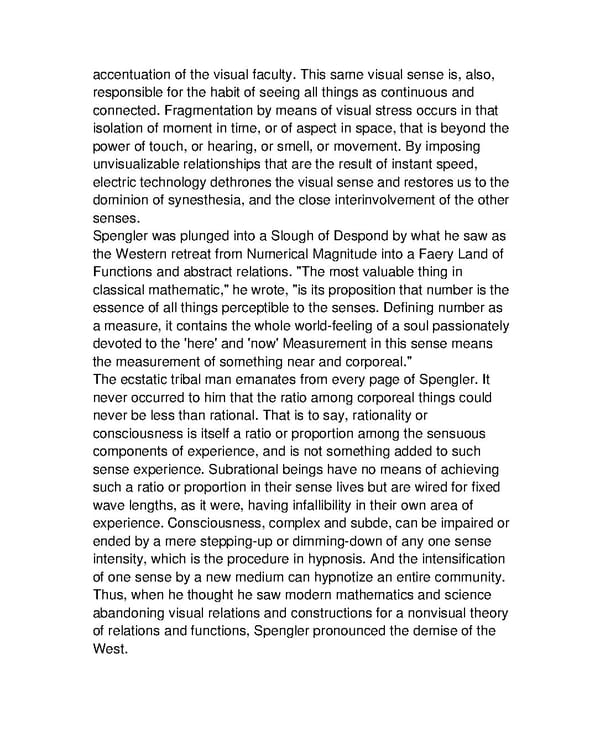accentuation of the visual faculty. This same visual sense is, also, responsible for the habit of seeing all things as continuous and connected. Fragmentation by means of visual stress occurs in that isolation of moment in time, or of aspect in space, that is beyond the power of touch, or hearing, or smell, or movement. By imposing unvisualizable relationships that are the result of instant speed, electric technology dethrones the visual sense and restores us to the dominion of synesthesia, and the close interinvolvement of the other senses. Spengler was plunged into a Slough of Despond by what he saw as the Western retreat from Numerical Magnitude into a Faery Land of Functions and abstract relations. "The most valuable thing in classical mathematic," he wrote, "is its proposition that number is the essence of all things perceptible to the senses. Defining number as a measure, it contains the whole world-feeling of a soul passionately devoted to the 'here' and 'now' Measurement in this sense means the measurement of something near and corporeal." The ecstatic tribal man emanates from every page of Spengler. It never occurred to him that the ratio among corporeal things could never be less than rational. That is to say, rationality or consciousness is itself a ratio or proportion among the sensuous components of experience, and is not something added to such sense experience. Subrational beings have no means of achieving such a ratio or proportion in their sense lives but are wired for fixed wave lengths, as it were, having infallibility in their own area of experience. Consciousness, complex and subde, can be impaired or ended by a mere stepping-up or dimming-down of any one sense intensity, which is the procedure in hypnosis. And the intensification of one sense by a new medium can hypnotize an entire community. Thus, when he thought he saw modern mathematics and science abandoning visual relations and constructions for a nonvisual theory of relations and functions, Spengler pronounced the demise of the West.
 Understanding Media by Marshall McLuhan Page 125 Page 127
Understanding Media by Marshall McLuhan Page 125 Page 127